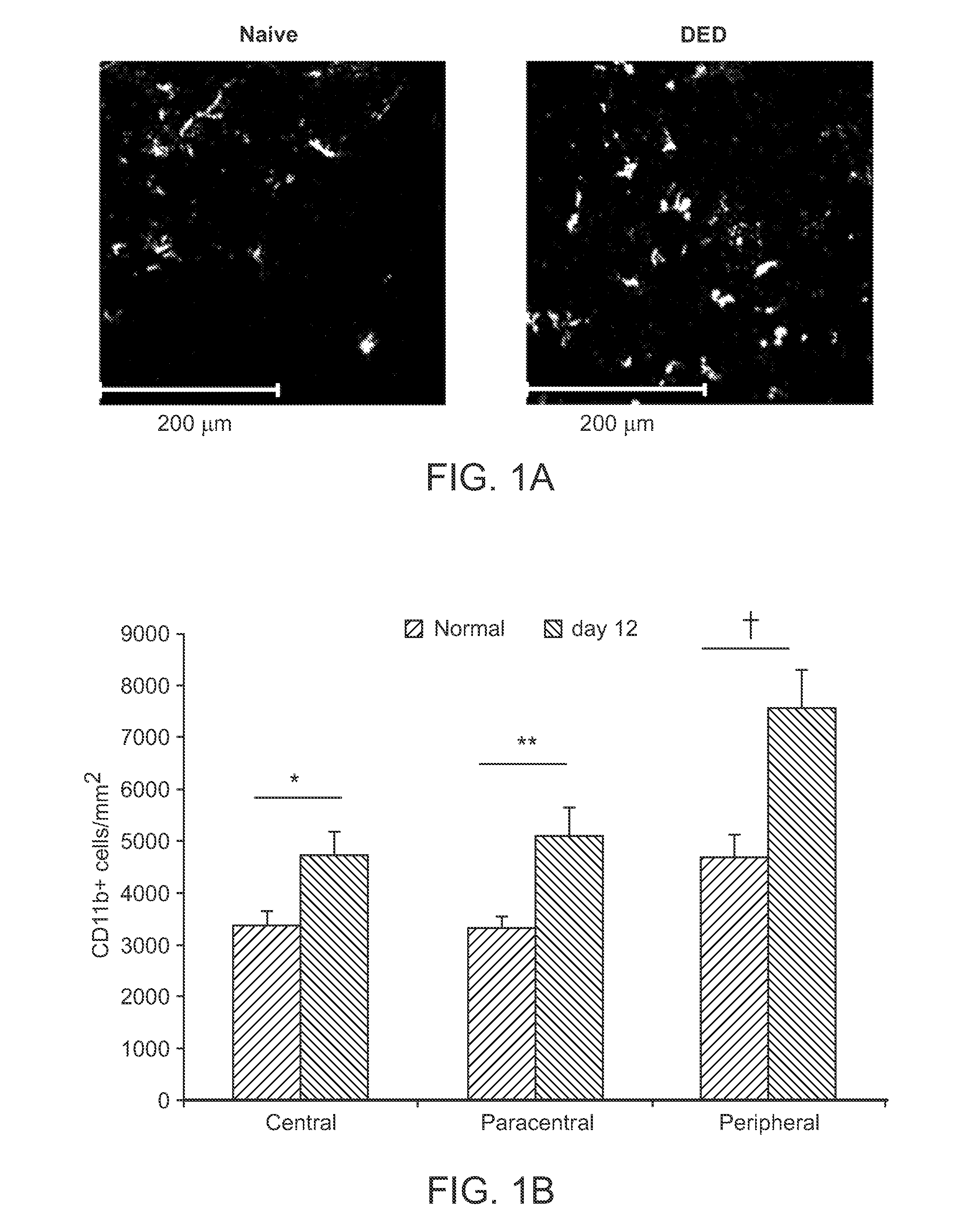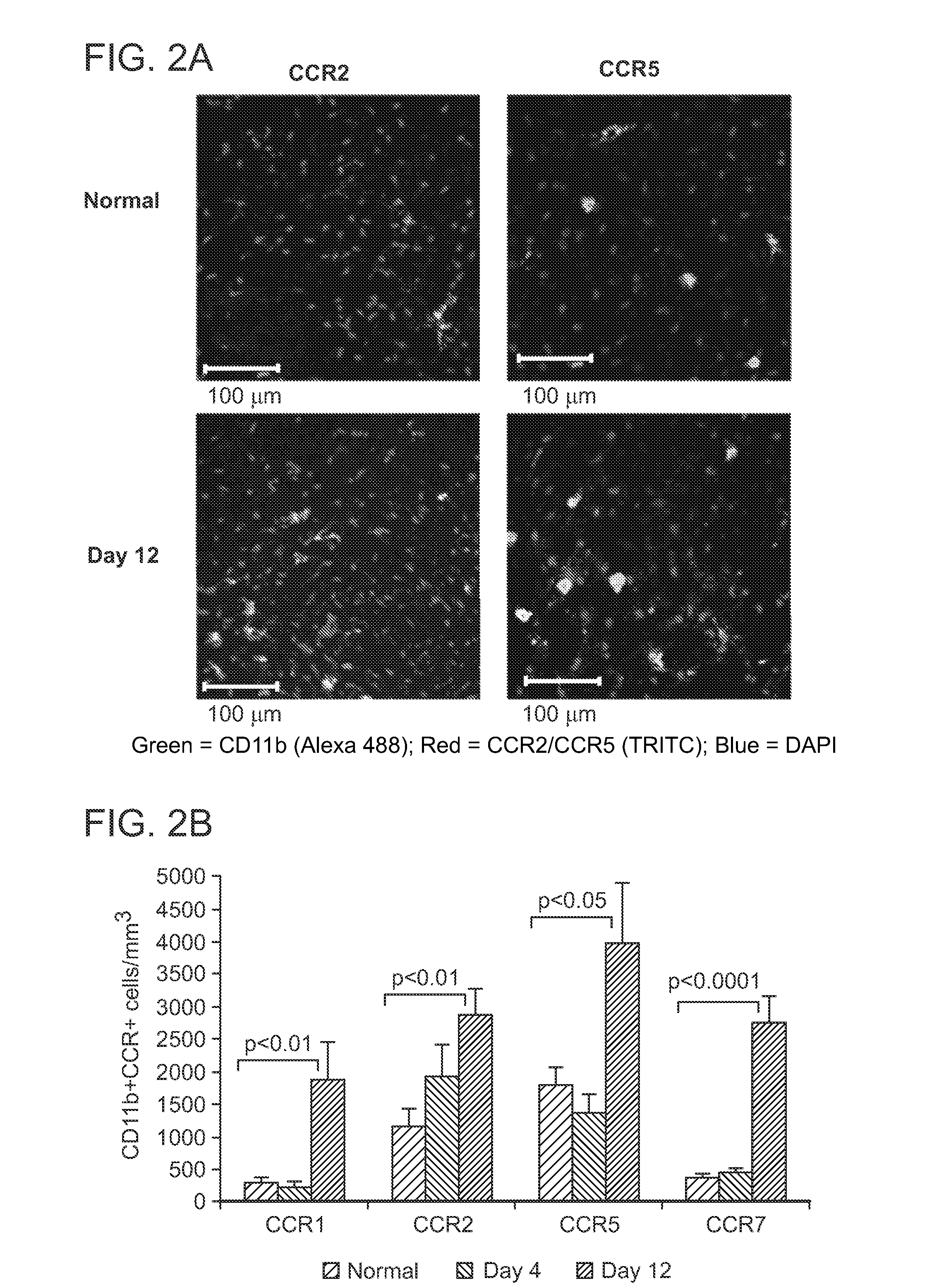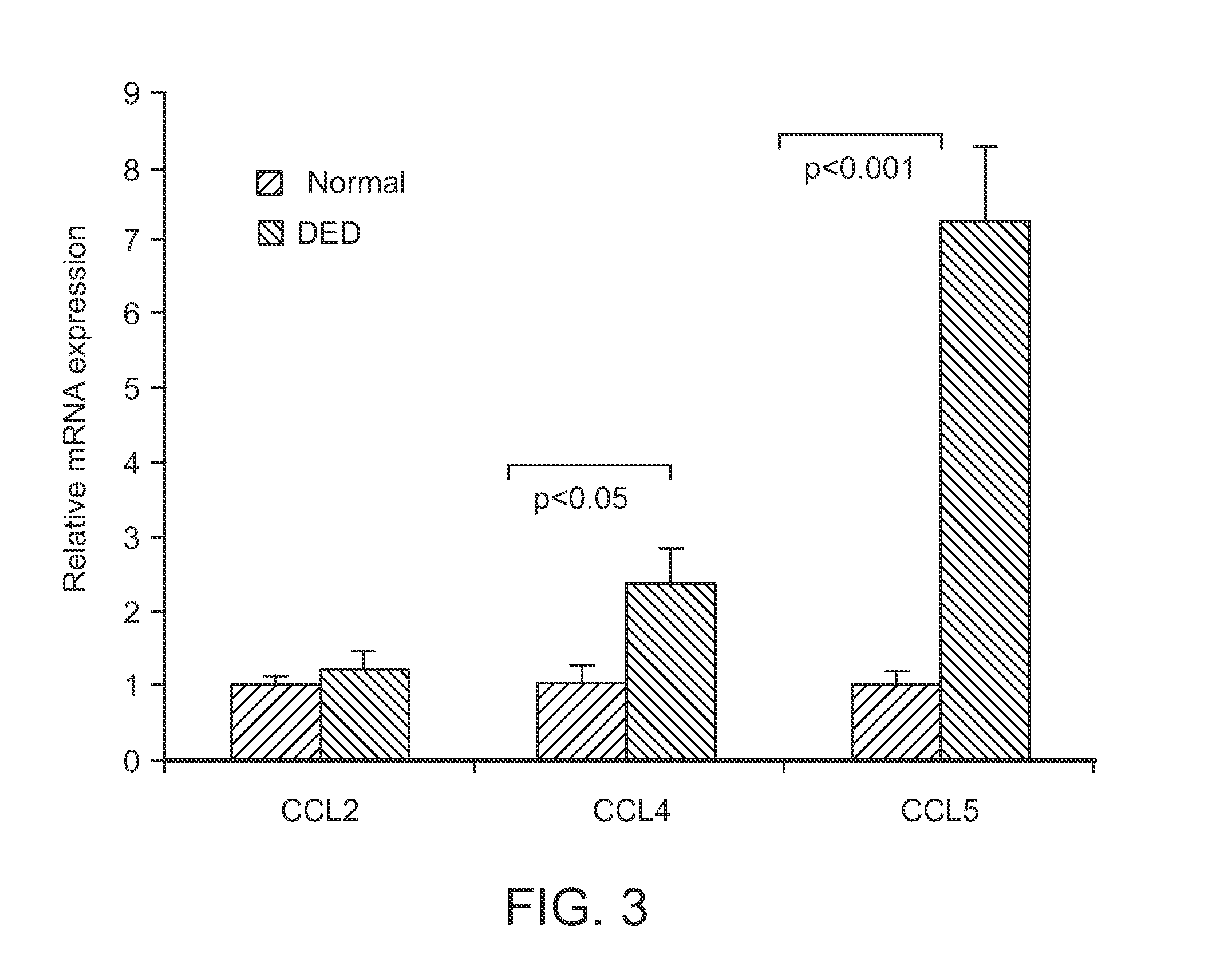Use of C-C Chemokine Receptor Type 7 (CCR7) Inhibitors
a chemokine receptor and inhibitor technology, applied in the direction of antibody medical ingredients, drug compositions, peptides, etc., can solve the problems of limited current therapeutic strategies, debilitating impact on daily activities, and reduced visual acuity, so as to facilitate improvement or remediation of damage, reduce severity and/or frequency of symptoms, eliminate symptoms and/or their underlying causes
- Summary
- Abstract
- Description
- Claims
- Application Information
AI Technical Summary
Benefits of technology
Problems solved by technology
Method used
Image
Examples
example 1
Corneal CD11b+ Antigen-Presenting Cells Up-Regulate Chemokine Receptor Expression in DED
[0102]The normal cornea is endowed with a heterogeneous population of antigen-presenting cells (APCs) including CD11b+ cells of the stroma. Small molecular weight cytokines with chemoattractant properties, chemokines, have a critical role in regulating APC migration and activation. Immature dendritic cells (i.e., APCs) express the chemokine receptors CCR1, CCR2, and CCR5, which mediate mobilization to sites of inflammation. By contrast, mature APCs up-regulate their expression of CCR7, which facilitates homing to secondary lymphoid tissues.
[0103]As described in detail below, the expression of chemokine receptors CCR1, CCR2, CCR5, and CCR7 by corneal CD11b+ APCs in DED was characterized. The mRNA expression of chemokine ligands CCL2 (MCP-1), CCL4 (MIP-1β), and CCL5 (RANTES) at the ocular surface was quantified. Finally, the dynamics of homing of mature CCR7+CD11b+ APCs into draining lymph nodes i...
example 2
Topical CCR7 Blockade is Highly Effective in Inhibiting the Immunopathogenesis of DED
[0111]The critical contribution of inflammation to the development and progression of DED has become increasingly clear in recent years. Hyperosmolarity resulting from desiccating stress induces the epithelial expression of pro-inflammatory cytokines and chemokines. Chemokine-mediated recruitment of immature antigen-presenting cells (APCs) to the ocular surface ensues (as explained above), with the pro-inflammatory milieu promoting their subsequent activation and maturation (Stevenson et al., 2012 Arch Ophthalmol, 130:90-100). In accordance with the acquisition of maturation markers, mature APCs up-regulate the chemokine receptor CCR7, which facilitates their directional migration towards lymphoid tissue, in response to a CCL21 chemotactic gradient generated in part by the lymphatic endothelium (Saeki et al., 1999 J Immunol, 162: 2472-2475). By capture and subsequent presentation of Antigen to T hel...
PUM
| Property | Measurement | Unit |
|---|---|---|
| osmolality | aaaaa | aaaaa |
| volume | aaaaa | aaaaa |
| transcription stability | aaaaa | aaaaa |
Abstract
Description
Claims
Application Information
 Login to View More
Login to View More - R&D
- Intellectual Property
- Life Sciences
- Materials
- Tech Scout
- Unparalleled Data Quality
- Higher Quality Content
- 60% Fewer Hallucinations
Browse by: Latest US Patents, China's latest patents, Technical Efficacy Thesaurus, Application Domain, Technology Topic, Popular Technical Reports.
© 2025 PatSnap. All rights reserved.Legal|Privacy policy|Modern Slavery Act Transparency Statement|Sitemap|About US| Contact US: help@patsnap.com



